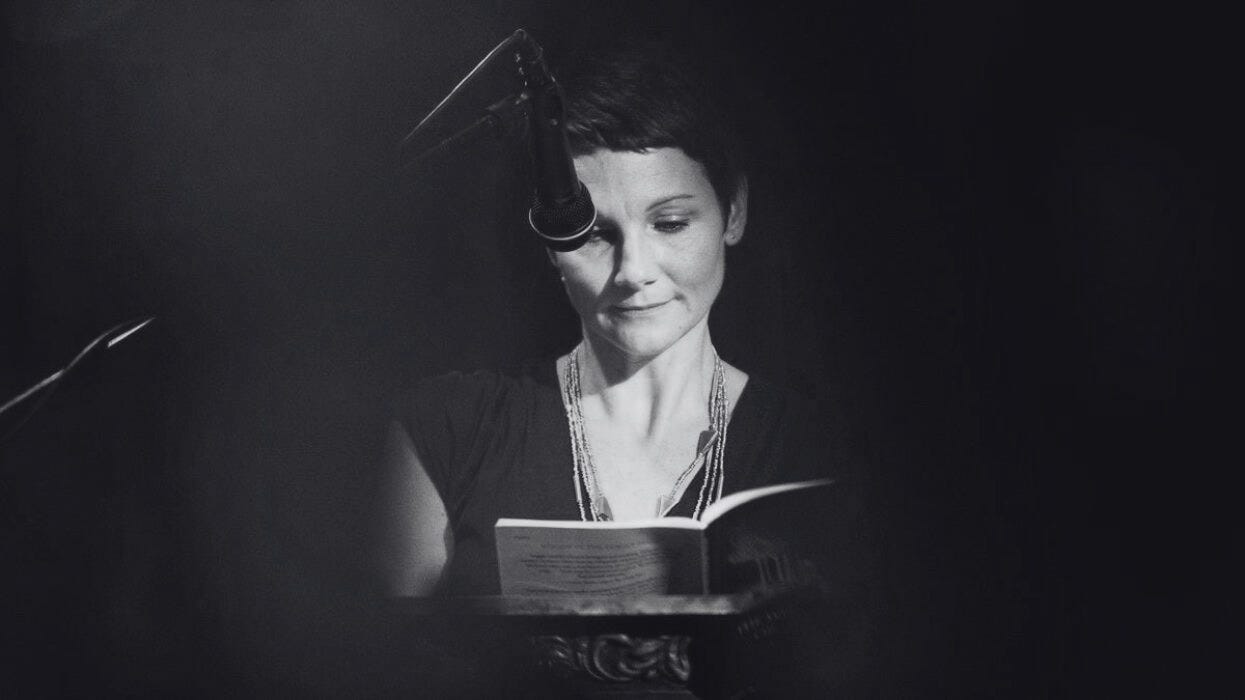MAGGIE SMITH IS A POET AND AUTHOR FROM COLUMBUS, OHIO. HER POETRY COLLECTIONS INCLUDE GOLDENROD, GOOD BONES, AND DISASTEROLOGY, AMONG OTHERS, AND HER MOST RECENT PUBLICATION IS THE MEMOIR YOU COULD MAKE THIS BEAUTIFUL. SHE WAS THE RECIPIENT OF A NATIONAL ENDOWMENT FOR THE ARTS CREATIVE WRITING FELLOWSHIP IN 2011 AND HAS ALSO RECEIVED AWARDS FROM THE OHIO ARTS COUNCIL, AS WELL AS ACADEMY OF AMERICAN POETS PRIZES AND A PUSHCART PRIZE.
[You Could Make This Place Beautiful] parses out critical bits of the story that we need to know, such that the full picture comes into view slowly. How did you architect that?
“Largely intuitively, which is how all writing happens. I tend to write poems that don't even hit a second page. The process of tackling a book of this size for me was only possible if I did it my way, and my way is by writing small. I know it's going to be metaphor-forward because that's how I write, I know I'm going to be interested in the echoes of motifs through the book. How I can allow different moments throughout the story to touch each other by reusing the same words or bringing back the same images.
I like to have those idea rhymes or image rhymes from early in a piece to later in the piece. I think it gives readers that breadcrumb trail feeling. Also structurally, I didn't just want to tell the story. I wanted the reader to get the sense of the emotional weather of this experience. And the only way that I could do it was to write the book the way that the experience felt, marked by complexity and fragmentation. Rumination and recursiveness. It was more of a spiral or a series of waves than a straight line.”
That’s exactly how it feels to read the chapters of this book.
“They’re vignettes. The only way for me to approach a long form my way is to prose like a poet, if I can use ‘prose’ as a verb.”
…
Were there any books that helped give you permission for this project?
“Oh, yeah. As I started working on this book I wondered, how do I do this my way? I'm never going to be able to do it at the level I want if I try to play by someone else's rules. So, I did seek out formally innovative examples and prose just to give me permission. Blow Your House Down by Gina Frangello. I remember reading that book and thinking if she can do this, I can do this. It was a courage lender. Carmen Maria Machado’s In the Dream House and Lidia Yuknavitch's The Chronology of Water. My hope is that maybe someone will pick up my book and say: I didn't know a memoir could look like this or sound like this or read like this. And maybe it'll give someone an idea of how to tell a story because they were feeling stuck.”

